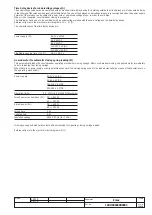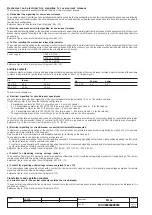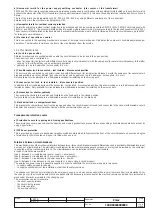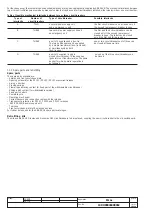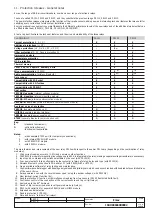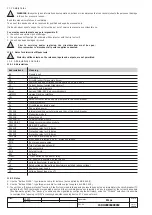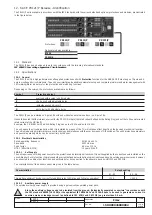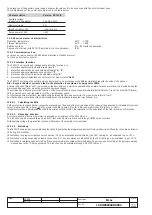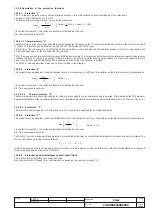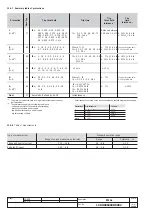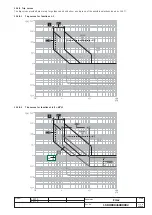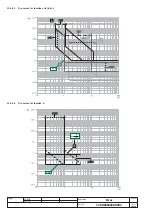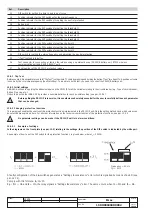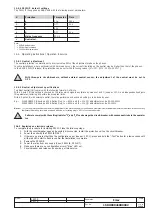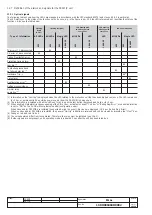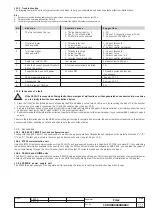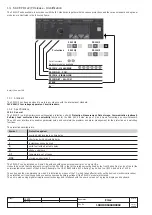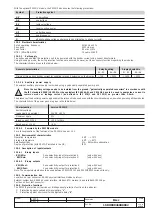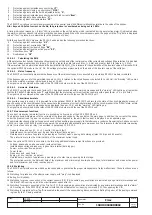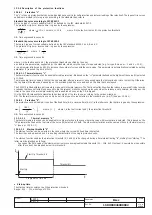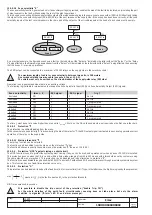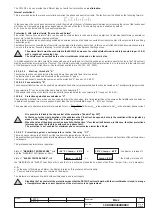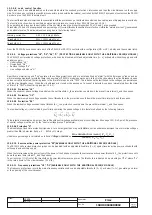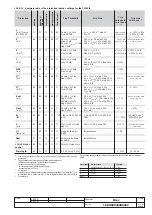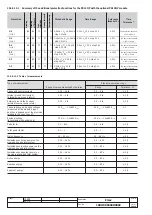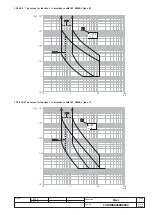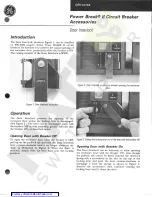
L2234
Emax
38/158
Model
Scale
Page No.
Doc. No.
Apparatus
1SDH000460R0002
L2778
Ref.
Description
13
DIP switch for setting trip time t4 and type of curve
14
Position indicator for the DIP switches for the mains frequency
15
Position indicator for the DIP switches for setting the neutral protection
16
Rating plug
17
Position indicator for the DIP switches for setting the threshold I1
18
Position indicator for the DIP switches for setting the threshold I2
19
Position indicator for the DIP switches for setting the threshold I3
20
Position indicator for the DIP switches for setting the threshold I4
21
Position indicator for the DIP switches for setting the time t1
22
Position indicator for the DIP switches for setting the time t2
23
Position indicator for the DIP switches for setting the time t4
24
DIP switch for setting the mains frequency and adjusting the neutral protection
25
"i Test" test and info button
26
Test connector for connecting or testing the release using an external device (PR030/B battery unit, BT030 wireless
communication unit and SACE PR010/T unit)
27
Serial number of the PR121/P protection release
12.5.1 Trip Test
Before you start, it is advisable to run a test ("Trip Test") on the whole TC chain by pressing and holding the button "i Test" for at least 7 s. A positive outcome
is shown by the circuit-breaker opening (see Watchdog). To be able to do the test, you need to connect the PR030/B battery unit.
12.5.2 Initial settings
ABB SACE will see to applying the adhesive labels on the PR121/P for all the variables relating to the circuit-breaker (e.g. Type of circuit-breaker,
Rating Plug size, etc.).
It should be noted that ABB SACE provides a sensible definition for each possible setting (see par. 12.5.4).
Before putting the PR121/P into service, it is nonetheless absolutely essential for the user to carefully define each parameter
that can be changed.
12.5.3 Changing protection functions
This paragraph enables the user to set the protection functions implemented in the PR121/P unit. Only the setting methods and which values can
be selected are explained here. For all other information on the technical characteristics of the protection functions, see par. 12.2.5.
No parameter settings can be made if the PR121/P unit is in alarm conditions.
12.5.3.1
Example of settings
In the diagrams on the front plate (see par. 12.5) relating to the settings, the position of the DIP switch is indicated by the white part.
An example of how to set the DIP switch for the protection function L is given below, where I
n
= 2000A:
A faulty configuration of the dip-switches generates a “Settings Inconsistency” error which is signalled by means of a LED (see
par. 12.7.1).
Comply with this formula: I1<I2<I3.
E.g.: if I1 = 1In and I2 = 1In, the relay signals a “Settings Inconsistency” error. The same occurs when I2 = 5In and I3 = 4In.
Frequency = 50 Hz
I
n
N = 50%


